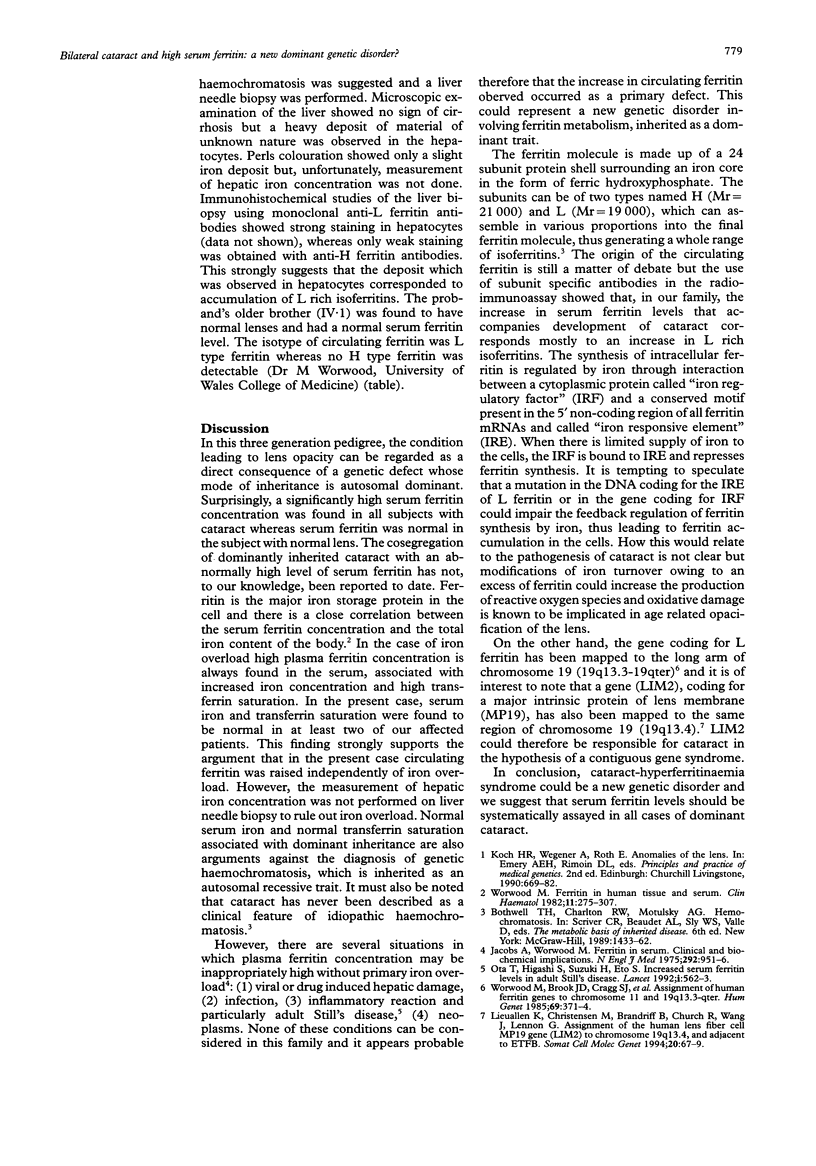Abstract
This paper reports the cosegregation in a three generation pedigree of dominantly inherited cataract with an abnormally high level of serum ferritin. In this family, circulating L ferritin was raised in all subjects affected by cataract independently of iron overload. We suggest that a disorder of ferritin metabolism could be a new genetic disorder leading to lens opacity. Cataract-hyperferritaemia syndrome could also be a new contiguous gene syndrome involving the L ferritin gene and the gene coding for the lens membrane protein (MP19), which both map to the same region of chromosome 19q.
Full text
PDF

Selected References
These references are in PubMed. This may not be the complete list of references from this article.
- Jacobs A., Worwood M. Ferritin in serum. Clinical and biochemical implications. N Engl J Med. 1975 May 1;292(18):951–956. doi: 10.1056/NEJM197505012921805. [DOI] [PubMed] [Google Scholar]
- Lieuallen K., Christensen M., Brandriff B., Church R., Wang J., Lennon G. Assignment of the human lens fiber cell MP19 gene (LIM2) to chromosome 19q13.4, and adjacent to ETFB. Somat Cell Mol Genet. 1994 Jan;20(1):67–69. doi: 10.1007/BF02257488. [DOI] [PubMed] [Google Scholar]
- Worwood M., Brook J. D., Cragg S. J., Hellkuhl B., Jones B. M., Perera P., Roberts S. H., Shaw D. J. Assignment of human ferritin genes to chromosomes 11 and 19q13.3----19qter. Hum Genet. 1985;69(4):371–374. doi: 10.1007/BF00291657. [DOI] [PubMed] [Google Scholar]
- Worwood M. Ferritin in human tissues and serum. Clin Haematol. 1982 Jun;11(2):275–307. [PubMed] [Google Scholar]


